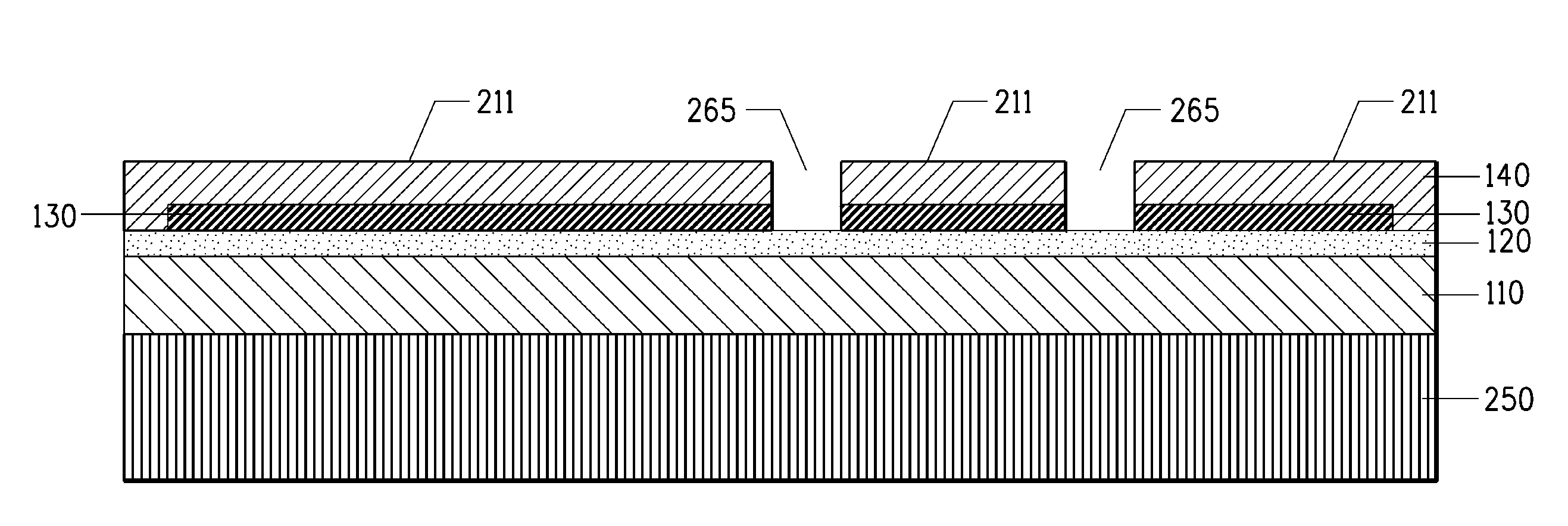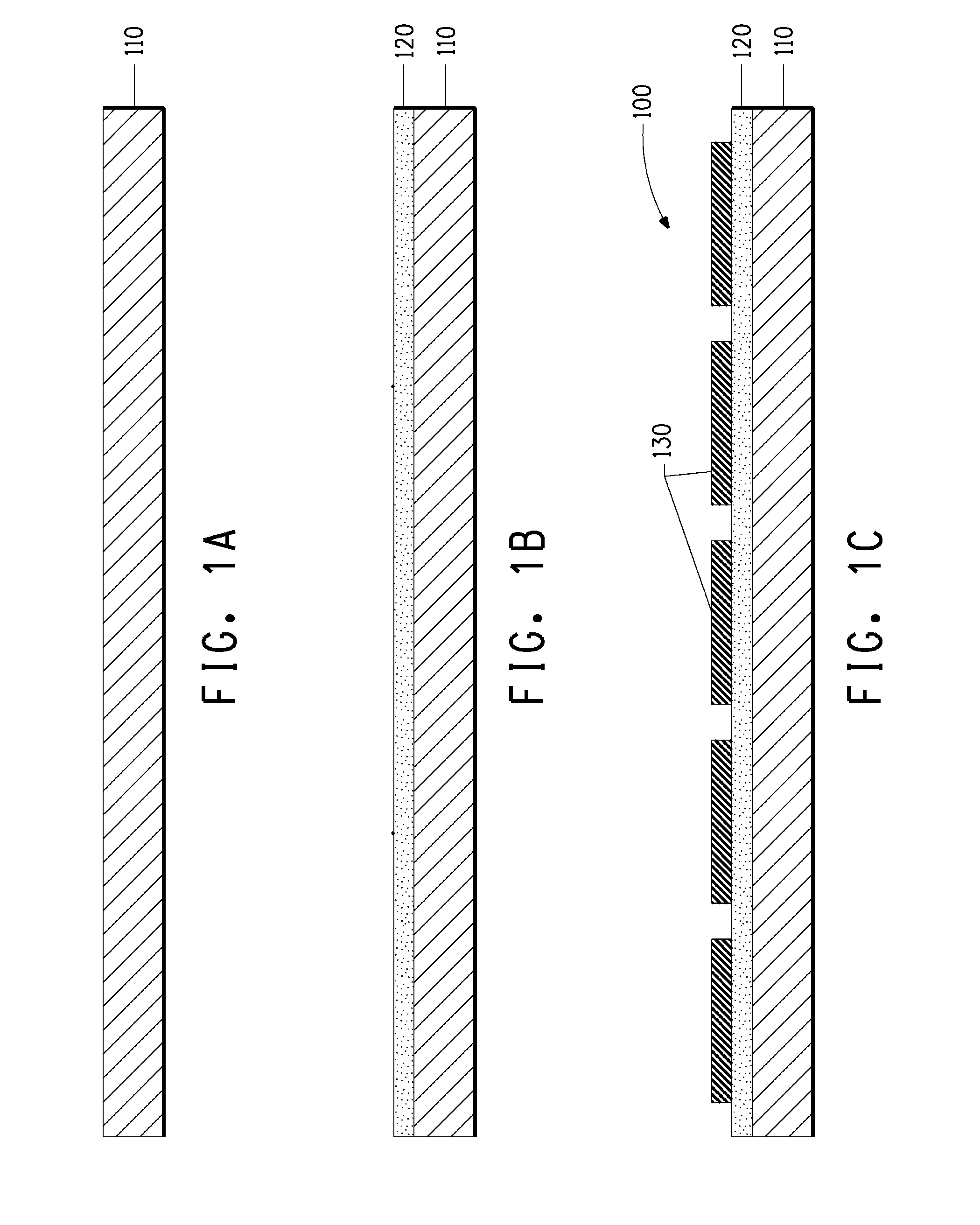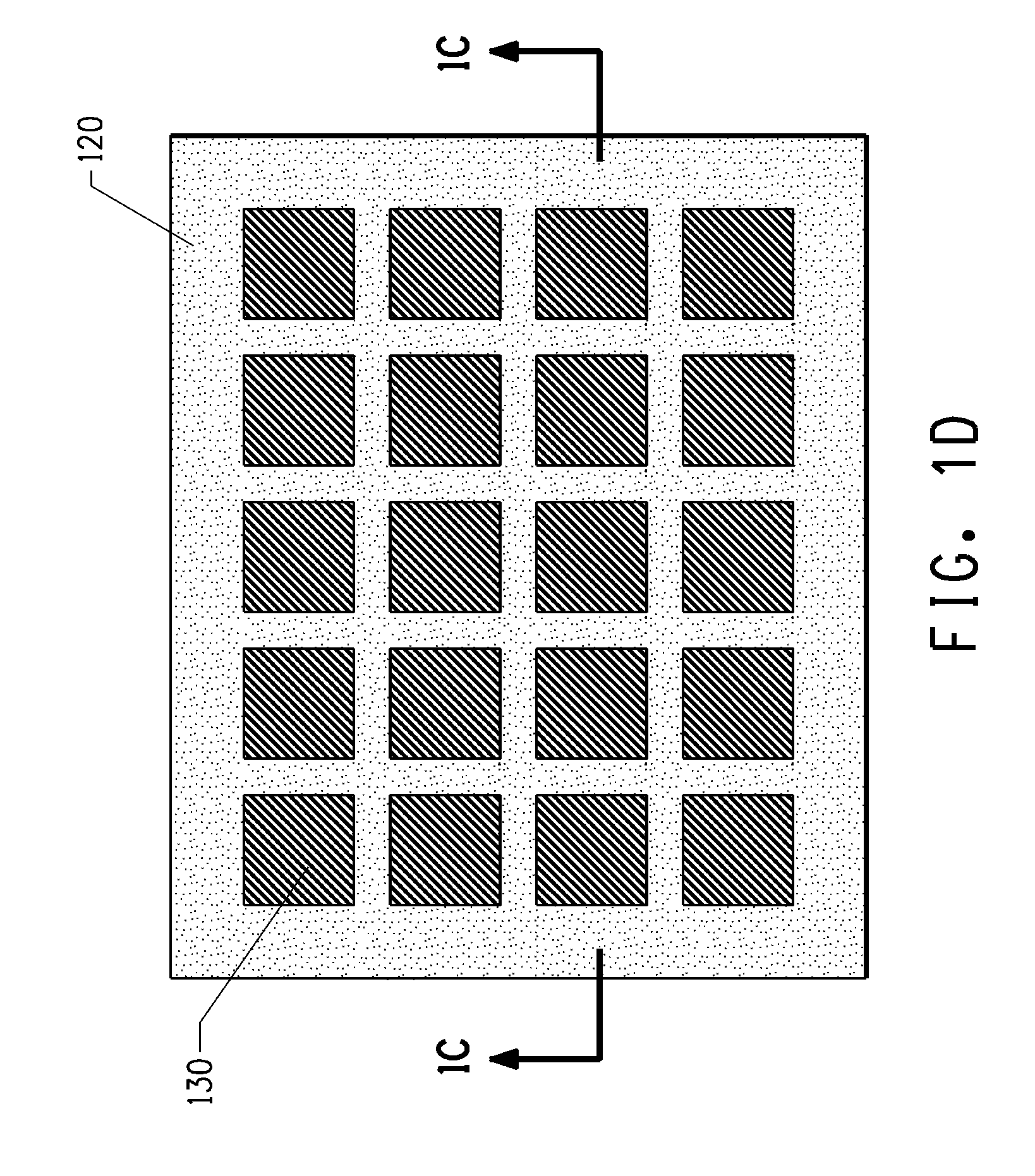Methods of embedding thin-film capacitors into semiconductor packages using temporary carrier layers
a thin-film capacitor and semiconductor technology, applied in the field of semiconductor packages, can solve the problems of not revealing methods or specific materials that may be used, and limit the number of smt chip capacitors that can be mounted in parallel on a semiconductor package, and achieve the effect of improving structural support and minimal distortion
- Summary
- Abstract
- Description
- Claims
- Application Information
AI Technical Summary
Benefits of technology
Problems solved by technology
Method used
Image
Examples
example 1
[0070]Three different types of magnetic sheet material were obtained from Magnum Magnetics, of Marietta, Ohio. One was 0.3 mm thick with a biaxially oriented polypropylene material on one of its sides. Another was 0.76 mm thick with a matte white material on one of its sides. A third was a higher magnetic strength material that was 0.76 mm thick with no other material on either side. A piece of each of these 3 types of magnetic sheet was placed in an oven set to a temperature of 190° C. for 30 minutes. Upon removal from the oven, all three magnetic material sheet types were warped and had blisters. A piece of each of the 3 types of magnetic sheet material was placed in an oven set to a temperature of 120° C. for 10 minutes. The 0.3 mm thick magnetic sheet and the 0.76 thick magnetic sheet with the matte white material on one of its sides were unaffected. The higher magnetic strength magnetic sheet sample with no additional material on either side exhibited some minor blisters.
example 2
[0071]Pieces of the three types of magnetic sheets of Example 1 were sequentially exposed to potassium carbonate developer chemistry, cupric chloride etching chemistry and an alkaline, aqueous photoresist stripper chemistry at process temperatures typical in the printed wiring board industry. All of the samples were unaffected.
example 3
[0072]A 25 micrometer thick piece of nickel foil 270, obtained from Hamilton Precision Metals, of Lancaster, Pa., that had been processed through a fired-on-foil thin-film capacitor process without depositing the thin-film dielectric, was placed by hand on a piece of the 0.76 thick magnetic sheet material of Example 1 on the side opposite the white material. DuPont™ Riston® MX-5020 photoresist was laminated to the side of the nickel foil opposite to the magnetic sheet. The photoresist was exposed in an exposure unit typical in the printed wiring board industry to a Stouffer Step 9 exposure level and the coversheet was removed from the exposed photoresist. The sample was laser drilled using a UV laser. The sample was laser drilled with the laser initially impacting the photoresist side of the sample. The photoresist was applied to serve as a temporary means to protect the nickel surface from having any laser drilling residue deposited on the nickel surface. After laser drilling, the ...
PUM
 Login to View More
Login to View More Abstract
Description
Claims
Application Information
 Login to View More
Login to View More - R&D
- Intellectual Property
- Life Sciences
- Materials
- Tech Scout
- Unparalleled Data Quality
- Higher Quality Content
- 60% Fewer Hallucinations
Browse by: Latest US Patents, China's latest patents, Technical Efficacy Thesaurus, Application Domain, Technology Topic, Popular Technical Reports.
© 2025 PatSnap. All rights reserved.Legal|Privacy policy|Modern Slavery Act Transparency Statement|Sitemap|About US| Contact US: help@patsnap.com



